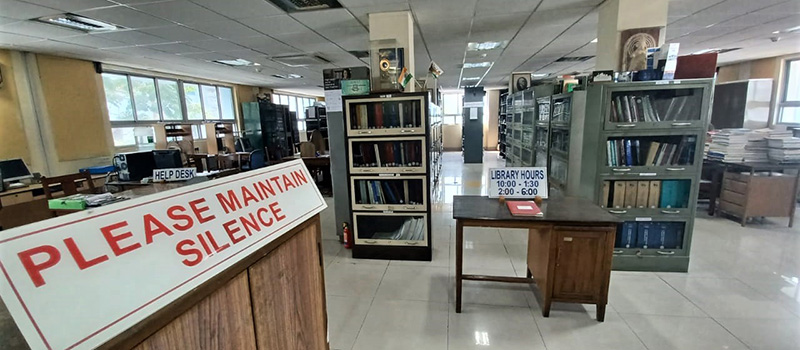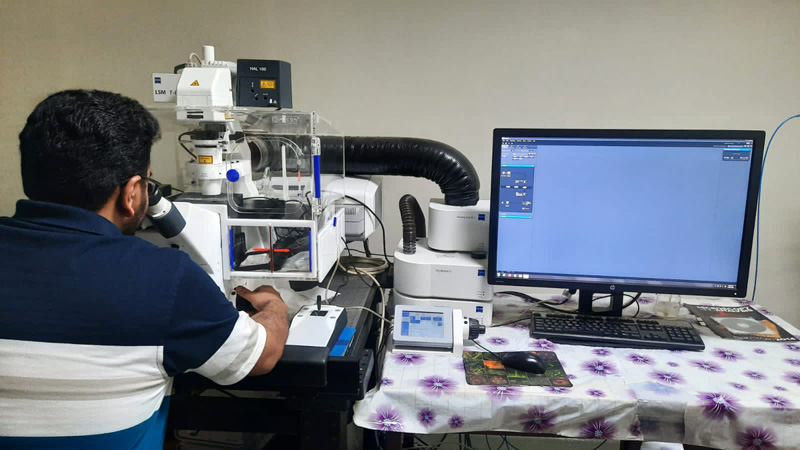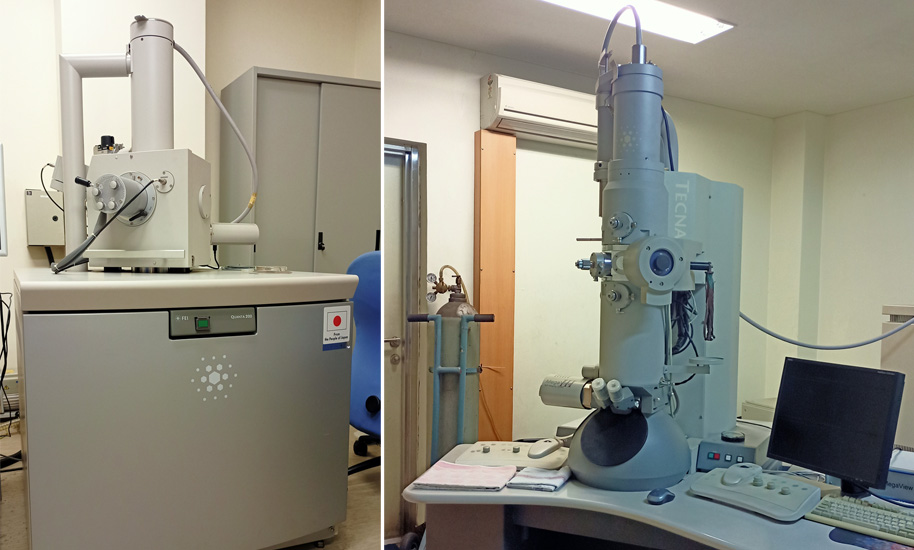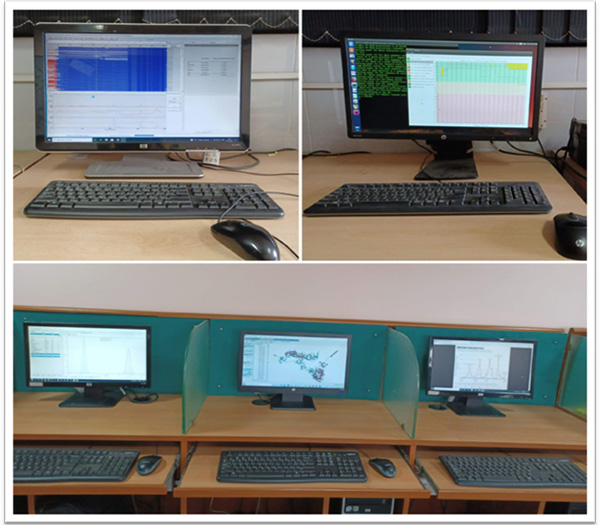ICMR - National Institute for Research
in Bacterial Infections
आईसीएमआर - राष्ट्रीय जीवाणु संक्रमण अनुसंधान संस्थान
Department of Health Research, Ministry of Health and Family Welfare, Government of India
स्वास्थ्य अनुसंधान विभाग, स्वास्थ्य और परिवार कल्याण मंत्रालय, भारत सरकार
WHO Collaborating Centre For Research and Training On Diarrhoeal Diseases
Facilities
Facilities
Library
 To support the divergent and vigorous academic activity of the Institute, the NICED library is fully geared to meet the needs of the scientists and other research workers.
NICED Library has undergone several phases of modernization since 1988.
It began its journey with a mere collection of a few books in a small room.
Read more...
To support the divergent and vigorous academic activity of the Institute, the NICED library is fully geared to meet the needs of the scientists and other research workers.
NICED Library has undergone several phases of modernization since 1988.
It began its journey with a mere collection of a few books in a small room.
Read more...
Animal Facility

Nodal Person : Dr Hemanta Koley
Contact through : koleyh.niced@gov.in
Phone : 91-33-2353-7470
The Animal Facility of NICED consists of two units. The old facility is present at the premises of S.C.PAL-Building. This has undergone phase wise modernization and at present it looks like a new version of old Animal House. The new facility is developed at the JICA-building premises of NICED with modern technological outfits. As a whole, the entire facility is updated to cater the need of Scientific Research of this Institute.
Scientists of National Institute of Cholera and Enteric Diseases (NICED) are working on different aspects of diarrheal diseases with special emphasis on development of vaccines against enteric diseases. Our Institute also raises and supplies antisera for detection and serotyping of Vibrio cholerae strains. NICED Animal Facilities division is engaged in care, breeding and management of animals required for studies conducted by researchers of the Institute.
The Micro Ventilated Cage System: Modern animal house facility at NICED was developed in collaboration with JICA project. This facility houses special animal cage system in which the air flow is maintained through the enclosures by a pressure differential system between the cage chamber and the exhaust chamber. This is accomplished by maintaining the cage chamber at a positive pressure with respect to the enclosures and maintaining the exhaust chamber at a negative pressure with respect to the enclosures. Both the input and the exhausted air are sterilized by various devices in the path of the ventilation stream. Purpose is to keep the animal germ free. The optimum humidity and temperature of the cage chamber is maintained.
Surgical room is equipped with modern instruments like radio frequency operated surgical knife, anesthesia maintaining ventilation device, Vacuumed operated animal hair clipping machine etc which are used during operation and immunization to give minimum pain to the animal.
Successful management of our animal resource facilities involves effective utilization of manpower to achieve the goal of comprehensive animal care. We have trained and experienced staff to look after the animals. This facility has been given the responsibilities of production and maintenance of laboratory animals for research.
Recently we are having the following laboratory animal species and strains:
| Species | Strains | Status |
|---|---|---|
| Rabbit | New Zealand White | Outbred |
| Guinea Pig | English Albino | Outbred |
| Hamster | Golden hamster | Outbred |
| Sheep | Indian Sheep | Outbred |
| Rat | Wister | Inbred |
| Mice | Swiss | Outbred |
| Mice | BALB/C | Inbred |
| Mice | C57BL/6 | Inbred |
Biosafety Level-3 Laboratory (BSL3)

Since the enactment of environmental protection Act in 1989 and Department of Biotechnology (DBT) guidelines to deal with genetically modified organisms, India has embarked on establishing various levels of biosafety laboratories to deal with highly infectious and pathogenic organisms. Occurrence of outbreaks due to emerging and re-emerging pathogens has caused an urgency to create a safe laboratory environment. A high containment Biosafety level 3 (BSL-3) laboratory is mandatory for all clinical, diagnostic, teaching, research, or production facilities where work is performed with agents that can cause serious or potentially fatal disease to the personnel through inhalation and may contaminate the environment. Some of the potential areas of application of this laboratory are:
- Providing first line response during outbreaks due to novel/emerging pathogens
- Receiving and handling specimens containing high risk pathogens
- Propagation of high-risk pathogens for research purpose
- Performing immunogenicity studies (neutralization assays following vaccine trials, testing new vaccines)
- Animal model studies for research on high-risk viral pathogens
- Capacity building through training in Biosafety and Biosecurity
In wake of increasing threats of highly pathogenic viral infections such as Avian Influenza, Ministry of Health and Family Welfare provided funds in 2006 for setting up a BSL-3 laboratory at NICED to cater to the states of Eastern India. A modular prefabricated BSL3 laboratory was installed and inaugurated at NICED in 2007 inside the ID and BG Hospital Campus by Director General, ICMR in the presence of Additional Chief Secretary, Govt of West Bengal and other dignitaries from the State Health Department. The laboratory is equipped with sample handling, preparation, propagation, and storage facilities for high-risk pathogens taking care of the biosafety and biosecurity needs.
During the Avian Influenza outbreak in poultry in West
Bengal during January-February 2008 and Influenza
A/H1N1/2009 pandemic during July-December 2009 all suspected
human samples from West Bengal and neighbouring states were
handled and analysed by Real time PCR in the BSL-3
laboratory. Subsequently the lab has also been utilized
during INFA/H1N1/2009 outbreak during 2015 for providing
laboratory services to the state. During the current
COVID-19 pandemic, the facility is being extensively used to
culture the prevailing SARS-CoV-2 strains to study the
effect of potential antivirals.
In Indian settings, recent outbreaks due to emerging viruses
such as Nipah virus, arboviruses such as Crimean-Congo
haemorrhagic fever virus (CCHF) have led to increased
emphasis on having high containment facilities for the
preparedness to handle outbreaks due to highly infectious
pathogens. A new upgraded BSL-3 facility is going to be
constructed with enhanced features and laboratory space
which will further enhance the scope of work at NICED.
Funded by Department of Health Research, the construction
and validation of the new laboratory will be under the Virus
Research and Diagnostic Laboratory Network and will be
executed by CPWD.
Contact Person:
Ms. Papiya De, T.O. -
de.papiya@gmail.com
Nodal Person:
Dr. Mamta Chawla Sarkar, Sc. F -
chawlam70@gmail.com
Dr. Agniva Majumdar, Sc. C -
agniva.m@icmr.gov.in
.
Instrumentation
 Confocal Microscope
Confocal Microscope
Confocal Microscope
In charge : Dr Santasabuj Das
Email id :
santasabujdas@yahoo.com
Mobile no: 9875353737
The Institute has a central instrumentation facility located in the 3rd floor of S. C. Pal Building. Due to recent expansion, another set up will be coming up soon in the 2nd floor of JICA building. The central facility is equipped with high-speed centrifuges, ultracentrifuges, spectrophotometer, sonicator, and shakers for large bacterial cultures. This facility is being upgraded time to time. Recently, a large number of sophisticated instruments have been procured and these are placed under scientists for proper maintenance and utilization. These include FPLC, HPLC, LC-MS, calorimeters like ITC and DSC, FACS, confocal microscope, electron microscope, real-time PCR and automated DNA sequencer. The instruments are available for use mainly by our scientists and our collaborators.
Flow Cytometry Core Facility:
NICED established its Flow cytometry(Fluorescence activated Cell Sorting or FACS) as central Instrument facility in 2010. Flow cytometry is a laser-based, biophysical technology employed in cell counting, cell sorting, biomarker detection and protein engineering, by suspendingcells in a stream of fluid and passing them by an electronic detection apparatus. It allows simultaneous multiparametric analysis of the physical and chemical characteristics of up to thousands of particles per second. It is routinely used in the diagnosis of health disorders, especially blood cancers/ HIV etc. NICED facility has FACSAria II flow cytometer with 9 colour (2 near ultra violet, 5 blue and 2 red) three laser system with 375nm near UV, 488nm blue and 633nm red laser. The lasers are contained and the laser energy is rendered within the instrument structure making it completely safe during its functioning. No special work area safety is required. Structurally, it has three main components - (i) fluidics cart (pumps provide 5 - 75 psi pressure to accommodate a variety of cell sorting), (ii) optics system (comprising of lasers, fiber optics, optic filters and photomultiplier tubes (PMTs)) and (iii) cytometer electronics (converting optical signal to digital signal). This set up is highly compatible for both the purposes of analysis and sorting
Electron Microscopy

Nodal person
Mrs. Arpita Sarbajna
TECHNICAL OFFICER-C
E.M DIVISION
CONTACT NUMBER : 033 23537470, extn no : 2265
9830432609
E mail:
sarbajna.arpita@icmr.gov.in
The electron microscopes are used primarily for research and diagnosis. The techniques in routine use are negative staining analysis, Kleinschmidt's protein monolayer technique of DNA, partial denaturation mapping and heteroduplex analysis of DNA, protein-free spreading methods of DNA and RNA, immunoelectron microscopy, ultramicrotomy (both cryo and room temperature), cryo-electron microscopy, single particle analysis and tomography for three-dimensional image reconstruction, environmental scanning electron microscopy.
The division has the following equipments:
- FEI Tecnai 12 BioTwin Transmission Electron Microscope with Gatan cryostage (cryo-TEM) and Explore 3D Tomography package.
- FEI Quanta 200 Environmental Scanning Electron Microscope (eSEM)
- Leica Ultracut UCT Ultramicrotome with EMFCS cryo attachment
- Leica EMKMR2 Knifemaker
- Leica EMSTAIN Autostainer
- Leica EMTRIM Trimmer
- Leica EM CPC universal cryo-workstation
- Polaron Sputter Coater
- JEOL JEE-400 High Vacuum Evaporator (shadow caster)
- JEOL HDT-400 Glow Discharge apparatus
- Gatan Model 655 Dry Pumping Station
- Iwatani NL-50 Liquid Nitrogen Generator
NRAMRB
Bioinformatics

Nodal person
Dr. Surajit Basak
Email:
basaksurajit@gmail.com
Mobile: 9862924152.
The Bioinformatics Division is equipped with computer servers
and softwares. These servers and softwares may be utilized for
genome assembly, comparative genomics, phylogenetic analysis,
protein structure prediction and docking.
The following servers and softwares are available in the
division:
- Workstation with Intel Xeon processor, OS - Ubuntu.
- Workstation with Intel Core (TM)2 Quad CPU, OS - Windows10.
- Discovery studio visualizer, Auto dock, GROMACS.
- MEGAX, BEAST.
- FastQC, Trimmomatic, Spade assembler, Prodigal, QUAST.


